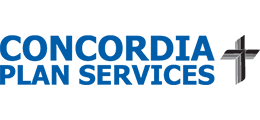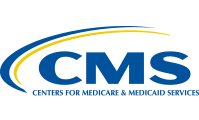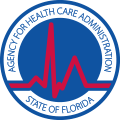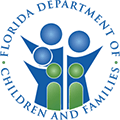What is Cocaine Abuse
Understanding Cocaine Abuse
Cocaine is a potent and addictive central nervous stimulant. Cocaine rose to new peaks in the 1980s and 1990s as the caviar of drugs; a drug so mysterious that people were often dying to get their hands on it. While coke was the drug of choice among the upper echelon of society during this time, it is not a new drug. Cocaine is actually one of the oldest known psychoactive – mood enhancing – drugs. The coca leaves, the actual source of cocaine, have been chewed and eaten for thousands of years by natives in Bolivia and Peru while the purified drug – cocaine hydrochloride – has been a drug of abuse for over 100 years. In fact, in the early 1900s, purified cocaine was a main ingredient in many of the elixirs and tonics created to treat a wide variety of maladies. Today, cocaine is available for medical usage as a Schedule II drug – meaning it has a high potential for abuse – as a local anesthetic for certain types of oral surgeries.
There are two primary forms of cocaine – a white powdered substance that can be snorted intranasally or injected and a freebase form called “crack cocaine,” which is a smokable substance. Both types of cocaine cross the blood-brain barrier quickly and produce nearly instantaneous effects on the user and all routes of administration have the potential to cause cocaine toxicity, acute cardiovascular or cerebrovascular emergencies, seizures, and in some cases, death. Cocaine abuse can range from occasional usage to compulsive binge-crash abuse, in which an individual will continue abusing cocaine for as long as they are able until they pass out.
Illegal cocaine, often termed “coke,” “snow,” and “blow,” is distributed on the streets as a fine, white powder that is often diluted by dealers to maximize profits. Some dealers will cut cocaine with inert substances like cornstarch, talcum powder, or artificial sweeteners. Others cut their cocaine with other types of drugs such as procaine (an anesthetic) or other stimulants such as amphetamines. Certain people who abuse cocaine will combine it with heroin to create a speedball – a potent and highly dangerous mixture of a CNS depressant and CNS stimulant.
With proper treatment and support, individuals who struggle with cocaine addiction can go on to live a happy, productive, and sober lives.
Statistics
Statistics of Cocaine Abuse
The National Survey on Drug Use and Health (NSDUH) has estimated that in the U.S. in 2008 approximately 1.9 million people abused cocaine in the month prior. Of those 1.9 million people, about 359,000 abused crack cocaine. The highest rates of cocaine users occur between the ages of 18 and 25. In 2008, it was reported that nearly one in every four drug abuse or misuse related emergency room visits (or 24%) involved cocaine.
Causes
What are the Causes of Cocaine Abuse
The precise cause for cocaine addiction and abuse is unknown. Researchers generally believe that the development of addiction is based upon the interplay of a number of different factors. These factors include:
Genetic: People who have a family history of addiction, especially if the addict was a first-degree family member, are at a far greater risk for developing an addiction themselves.
Physical: Deep within the brain, cocaine interferes with neurotransmitters, blocking the reuptake of norepinephrine, serotonin, and dopamine. The buildup of these neurotransmitters can lead to the pleasurable sensations of cocaine. It’s been suggested that some individuals may have a deficiency in some of these neurotransmitters, affecting the pleasure center of the brain. These individuals may then resort to abusing cocaine in order to experience pleasure.
Environmental: Individuals who are raised in homes in which addiction behaviors were modeled by caregivers are more likely to normalize drug abuse and use it as a way to cope with negative life experiences later in life. Stress, pressure, poverty, and other life events may also precipitate abuse of cocaine. Additionally, people who begin to use drugs – any drugs – earlier in life are at a higher risk for developing an addiction later in life. Also, lack of parental supervision and improper discipline at home plays a role in development of addiction.
Risk Factors:
- Men are more likely to abuse cocaine than women
- Childhood aggression
- Academic failure
Signs and Symptoms
Learn More About the Signs and Symptoms of Cocaine Abuse
The symptoms of cocaine abuse will vary wildly based upon individual genetic makeup, method of abuse, frequency of use, and amount used. Cocaine’s effects last between 30 minutes and two hours. The most common symptoms of cocaine abuse include:
Behavioral symptoms:
- Sudden bursts of energy
- Fast, pressured, exuberant speech
- Restlessness
- Increased activity
- Decreased ability to perform tasks at work or school
- Neglecting interpersonal relationships
- Violent, bizarre behaviors
Physical symptoms:
- Dilated pupils
- Constriction of blood vessels
- Tolerance – the need for more cocaine to achieve similar intoxicating effects
- Physical dependence
- Myocardial infarction (heart attack)
- Cardiac arrhythmias
- Tremors
- Abdominal pain and nausea
- Syncope
- Strokes
- Seizures
- Rhabdomyolysis
- Coma
- Sudden death
Cognitive symptoms:
- Inability to focus on one task
- Feelings of supremacy
- Increasing alertness
Psychosocial symptoms:
- Euphoria
- Irritability
- Paranoia
- Anxiety and panic
- Mood swings
Effects
Understanding the Effects of Cocaine Abuse
The long-term effects of cocaine abuse can leave virtually no part of an individual’s life untouched. The effects will vary based upon individual makeup, length of abuse, frequency of use, and route of administration and include:
- Cocaine addiction
- Loss of gainful employment
- Crumbling interpersonal relationships
- Mounting legal problems
- Incarceration
- Nasal perforation and loss of smell
- Permanent lung damage
- Ulcers or perforation of the gut
- Bowel gangrene
- Blood-borne infections if drug is injected
- Abscesses at injection sites
- Malnutrition
- Kidney damage or failure
- Delayed or impaired ejaculation
- Permanent cardiovascular complications
- Psychosis
- Hallucinations
Withdrawal and Overdose
Learn More About the Effects of Cocaine Withdrawal and Overdose
Withdrawal: Withdrawal from cocaine is rarely life-threatening, but can be highly unpleasant. It’s generally recommended that people who are addicted to cocaine detox in a proper rehab setting to minimize discomfort. Withdrawal generally lasts between one and two weeks. Effects of withdrawal include:
- Depression
- Cravings for cocaine that may persist for years following sobriety
- Anxiety
- Exhaustion
- Challenges concentrating
- Aches and pains
- Tremors
- Chills
- Anhedonia – inability to feel pleasure
- Self-harm
- Suicidal thoughts and behaviors
Overdose: Overdosing from cocaine can be fatal if the signs of an overdose are overlooked. By catching an overdose as early as possible and seeking immediate care, a cocaine user has a greater chance of recovering from the overdose. Overdose from cocaine can occur at any time; including the first time someone tries cocaine. Symptoms of cocaine overdose include:
- Abdominal pain, nausea, and vomiting
- Tremors
- Irregular, erratic breathing
- Hyperthermia
- Tachycardia
- Chest pains
- Seizures
- Anxiety, panic, and agitation
- Paranoia
- Hallucinations
- Delirium
- Myocardial infarction (heart attack)
- Stroke
- Respiratory collapse
Co-Occurring Disorders
Cocaine Addiction and Co-Occurring Disorders
People who have cocaine addiction may be struggling with the symptoms of an undiagnosed mental health disorder. Common co-occurring mental health disorders include:
- Depression
- Bipolar disorder
- Schizophrenia
- Antisocial personality disorder
- Other substance abuse disorders











